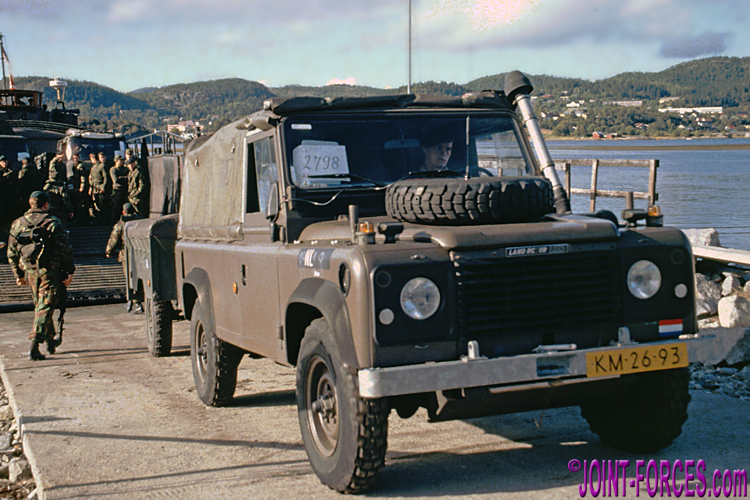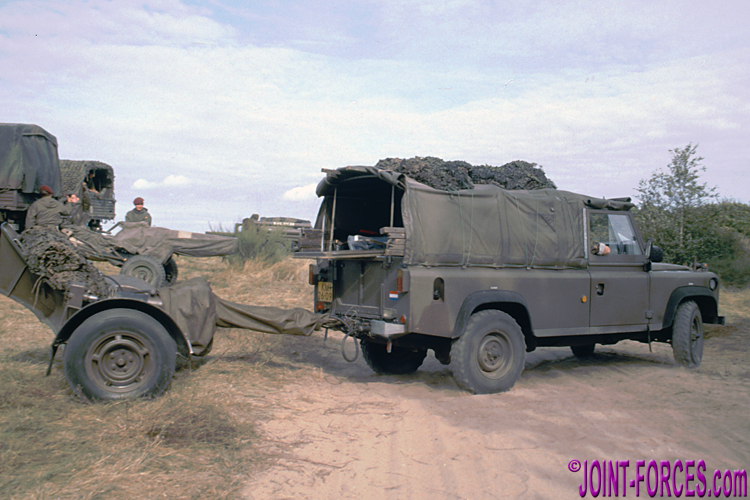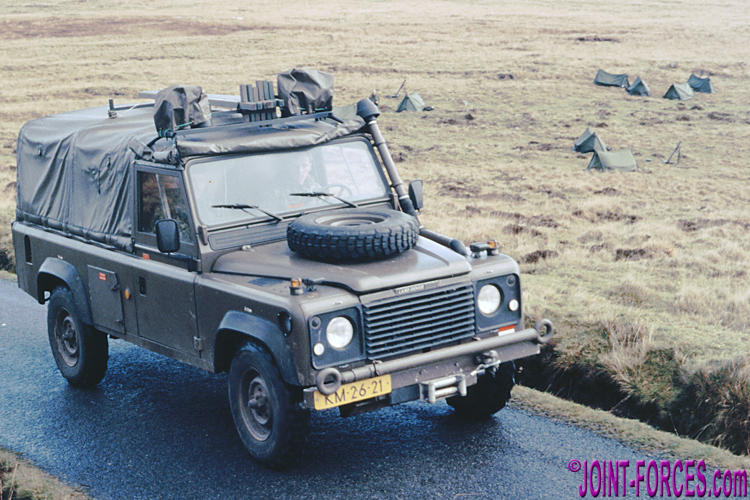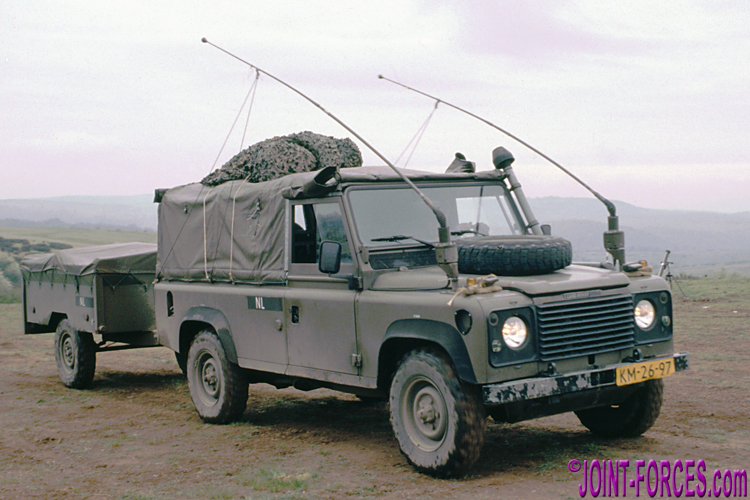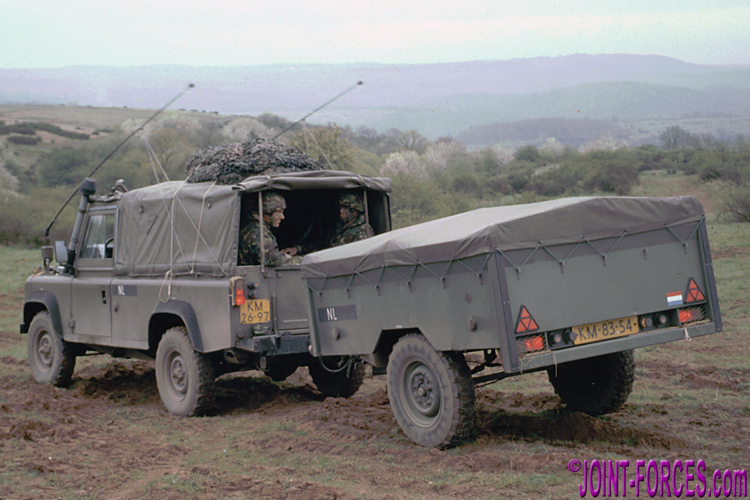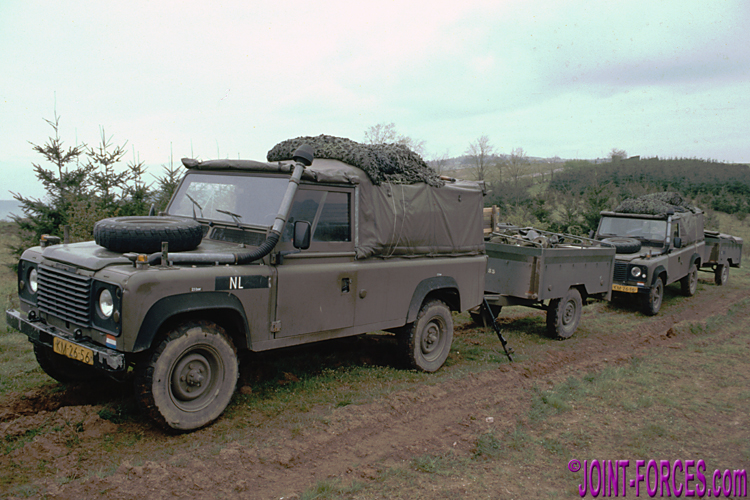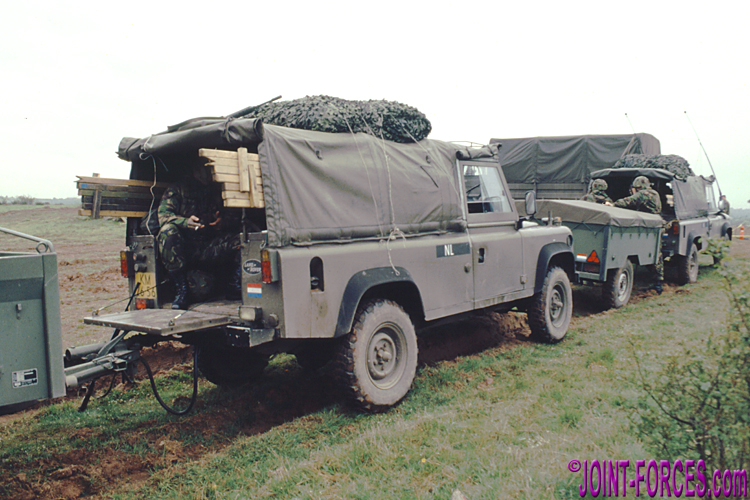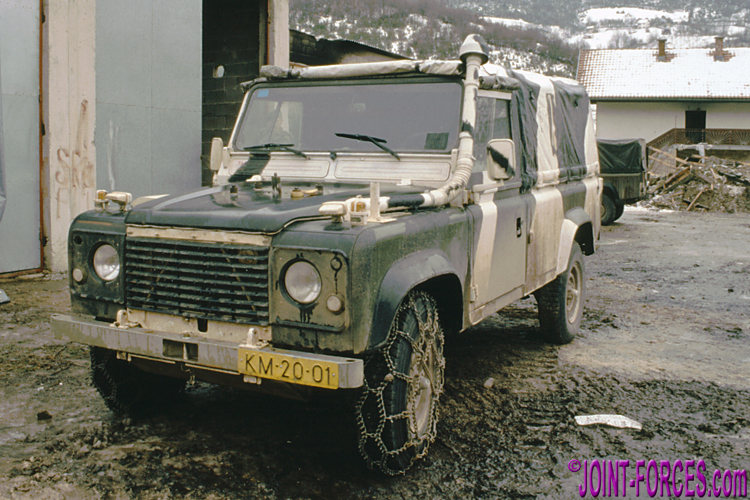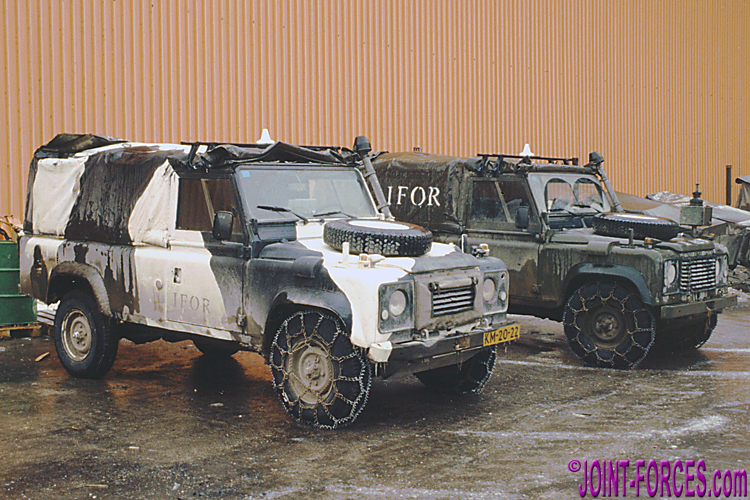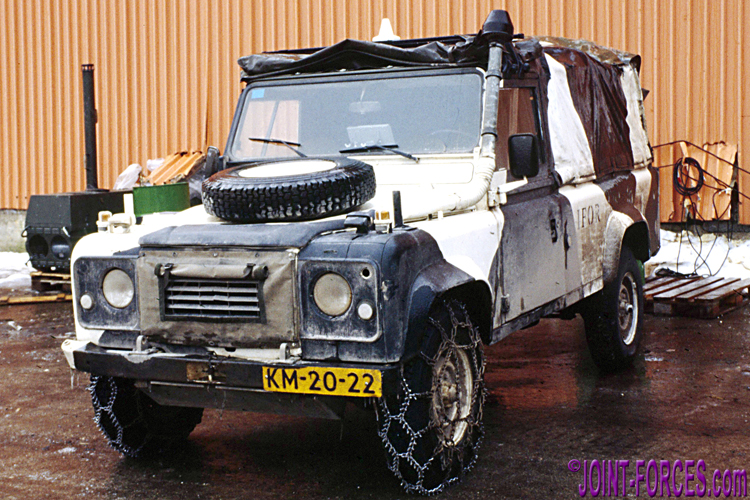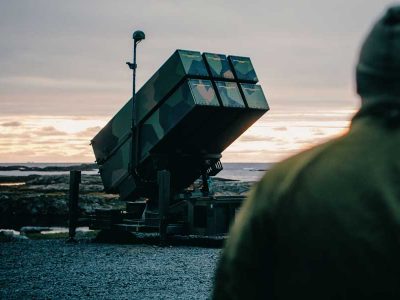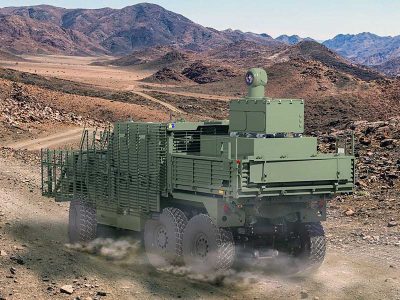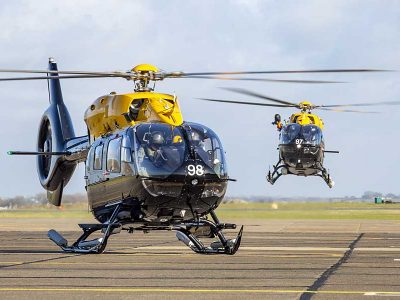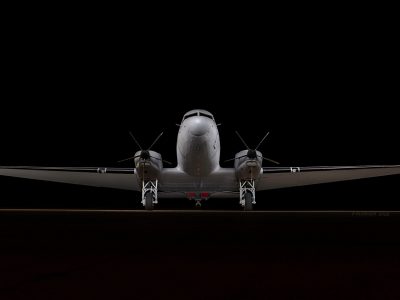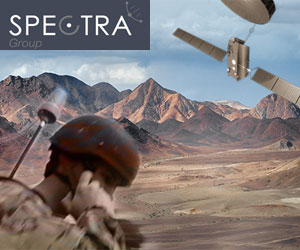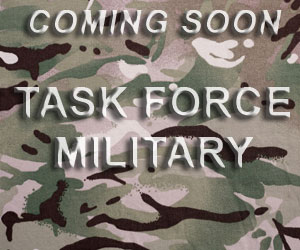For this Military Land Rover feature I am turning the clock back twenty to thirty years to focus on the pre-Wolf era Dutch Marines One-Ten, writes Bob Morrison.
~
In the mid-1980s, when the British Army was starting to replace its leaf sprung Series III Land Rover fleet with the new coil sprung One-Ten and Ninety models many nations began replacing their ageing Land Rover fleets with the Austrian Geländewagen (G-wagen) or cheaper Japanese alternatives, such as the Nissan Patrol or Toyota Land Cruiser, but the Dutch Marines stayed faithful to the English marque.
Even the Dutch Army, which at this time used both 88” Lightweight and militarised Series 109” Land Rovers, was on the cusp of going down the G-wagen route after running trials with this vehicle against the One-Ten and the Portuguese UMM Alter II but the Royal Netherlands Marine Corps (RNLMC) or Korps Mariniers, who had a separate budget, became the first foreign military force to buy the One-Ten in bulk. From the early 1970s Dutch and British Royal Marines co-operated closely as part of NATO’s UK/NL Amphibious Group and as a result there was a lot of commonality between the two forces’ equipment, so it was little surprise that the Dutch amphibious specialists bought British vehicles; indeed they actually accepted their One-Tens into service a couple of years ahead of the Royal Marines.
Back in 1987 some of these RNLMC vehicles were the first non-British coil-sprung Land Rovers that I photographed on exercise, when they were on the Dartmoor military training range participating on what I was told was the first chance they had to use their new vehicles in-role. Over the next decade I was to run into Dutch Marines on several Northern Flank exercises of the multinational ACE Mobile Force [Land] before I was able to photograph them on an operational deployment to Bosnia, where they were working alongside British forces as part of IFOR, the international peacekeeping force.
Although the Dutch Marines required certain military specification changes for commonality with the rest of their vehicle and equipment pool, when they procured the One-Ten they insisted that Land Rover incorporated these modifications on the production line so that they would not have the problem of warranty invalidity which afflicted the much modified Dutch Series III fleet. The most obvious external differences were to the lighting but the canopy was also very different to that used on the British One-Tens dating from the same period, and the raised air intake – often mistakenly called a snorkel – was a permanent feature rather than a temporary add-on like the Royal Marines used purely for amphibious operations.
For the front lighting, rather than having conventional sidelights and indicators outboard of the headlights, where the former can really only be seen from ahead, the Dutch used a wing top fitment. The top half of this had an orange lens which was visible from the sides as well as the front, and the bottom half was metal with a rectangular horizontal clear lens to give a forward facing sidelight. The normal Land Rover sidelight position was blanked off and a circular white reflector was fitted where the indicator lens would normally be in the lower secondary light position.
Sitting on the front wing tops, inboard of the indicators, was an unusual small truncated wedge shaped box. This was a tactical night driving light, derived from the German Notek design of World War Two, which cast a shrouded beam just ahead of the vehicle so that the driver could avoid obstacles. Its design prevented a strong light source from being seen from any great distance to the front or from overhead, thereby cutting down the risk of enemy identification of the vehicle, but the weak pool of light it projected was sufficient for convoy operations in near blackout conditions.
Above: More RNLMC One-Tens with trailers, Germany 1994 [©BM]
The rear lights on an RNLMC One-Ten were also a break from Solihull tradition, in that brake, side and indicator bulbs were all housed in a vertical rectangular box with three squarish lenses – two red and one orange. Inboard of the left light cluster were two small circular cross-section fittings which housed tactical night convoy brake light (top) and number plate illumination light respectively. The tiny red lens of the night brake light was only visible from directly behind. Either side of the tailgate were conventional rectangular fog and reversing lights. In the lower outer position where one would expect to see the indicators on a British vehicle of this period, there was a red circular reflector, though this was often painted over on vehicles deployed on exercise or operations. On peacetime safety grounds there were also orange circular reflectors just behind the front doors, but often these too got mysteriously painted over on exercise.
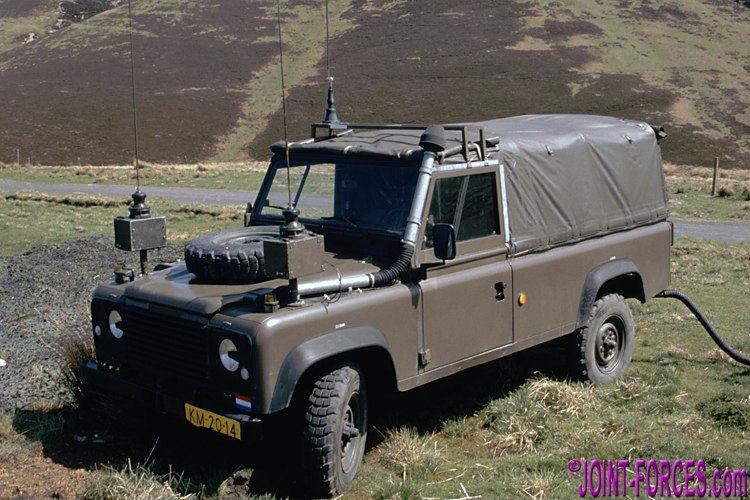
The canopy type used on the Dutch fleet was of a synthetic fabric, rather than canvas, and its adoption was a decade ahead of the British, who did not opt for this more modern material until the introduction of the Wolf. Naturally, it was much more waterproof than treated canvas, and gave a much snugger fit as it was not prone to shrinkage to the same extent. For Arctic operations, which the Dutch Marines were and still are tasked for, this canopy provided slightly better heat retention properties, and on amphibious operations it did not soak up water to the same extent when deep wading.
Just behind the rear left wing lights was permanently attached tubing which terminated with a cowl and separator just above windscreen level. Not only did this form part of the intake protection when vehicles were coming ashore from landing craft through up to 1500mm of water, but it also prevented dust ingression if operating in arid theatres. It was not until the Royal Marines started fitting the waterproofing kits to their Wolves in Iraq and Afghanistan that British forces adopted this simple way of protecting their vehicle engines. Incidentally, just like British waterproofed Defender 110 conversions in the 1990s, the Dutch One-Tens had their heater intake at the very front of the passenger side wing, rather than just ahead of the front bulkhead.
On the communications side, the RNLMC One-Tens seem to have been produced so that any vehicle could be Fitted For Radio (FFR). Behind the front wing lights on each side was a tubular spigot on a square mounting plate bolted through the wing top. A large cubic antenna mount box simply dropped onto this spigot and was locked in place by tightening a captive bolt. A third antenna, if the radio fit required, was usually fitted on a roof bar that attached to the sills above the front doors. Although I have not driven a Dutch One-Ten, I have travelled a few times in the passenger seat over the years, and the one thing I remember most is that forward visibility was extremely limited if antenna boxes are fitted, and the bonnet-mounted spare wheel emphasised this.
The images accompanying this article were taken on military training exercises on Dartmoor (1987) and Otterburn (1992) ranges in the UK, on AMF[L] exercises in Norway (1990), Denmark (1991) and Germany (1994), and at the start of the IFOR mission in Bosnia on New Years Day 1996. With the exception of KM-26-21, which was the first Dutch Marine One-Ten I ever photographed and was their equivalent of a REME Light Aid Detachment vehicle, the others were all standard configuration, though of course some were FFR, as is evident by their antennae. When they left Solihull the vehicles were in an olive green base colour which seemed to possibly be slightly more brown in shade than British Army vehicles of the same vintage, but by the winter of 95/6 many, though not all, of those operationally deployed to Bosnia had adopted a black, green and winter camouflage plumage to replace the UN all-white colour scheme used until the December 1995 Dayton Accord handed security responsibility in the war-torn country over to NATO.
Powered by the same naturally aspirated 2.5 litre diesel engine found in most coil-sprung British Army Land Rovers of the period, the RNLMC One-Tens were far from the fastest vehicles in the medium utility military vehicle class, but they had plenty of grunt and stamina. It was not unusual to find them towing massive trailers, which I have yet to see a Dutch Army G-wagen attempt, not to mention the 120mm heavy mortar system.
Operationally, the fleet proved its worth in Bosnia, and its service life was actually extended by a couple of years, until the introduction of the Wolf at the turn of the 21st Century. In the next two Military Land Rover features I first plan to look at the Dutch Marines Wolf model which replaced the One-Tens seen here, then intend to focus on the RNLMC WMIK variant.
[ images © Bob Morrison ]


